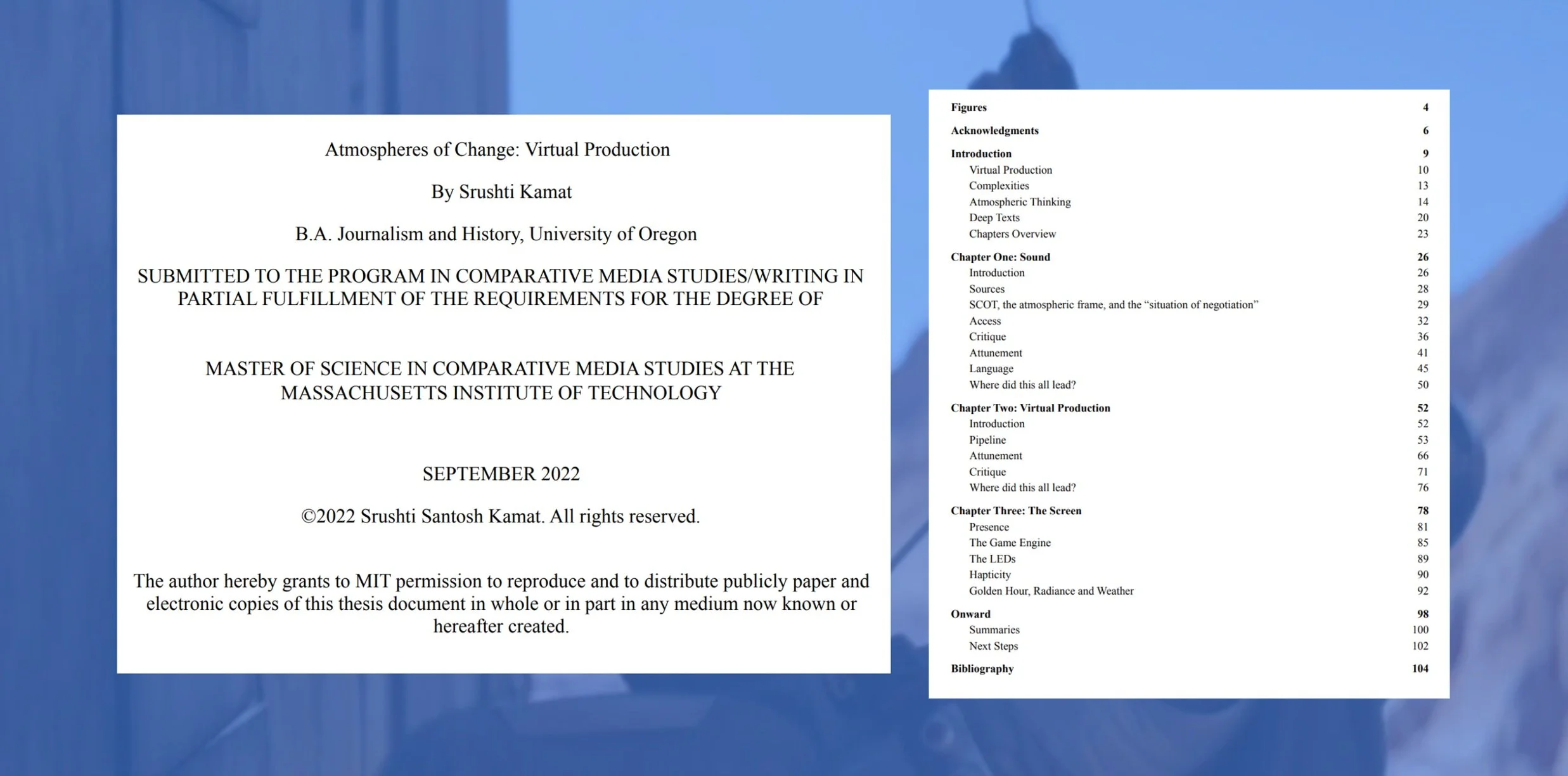Virtual Production
MIT Thesis 2022
Atmospheres of Change: Virtual Production [Link here]
ABSTRACT: There is much we cannot see about change as it occurs. Virtual production indicated a shift in traditional workflows of filmmaking at a time when the world was going through massive upheaval–The COVID-19 pandemic. What made this case a rich resource for theorizing was that it offered an opportunity to examine change as it occurs. The technology had vast possibilities, even if many of these possibilities were yet to be realized. Drawing from trade and fan publications, I explore how sound was first introduced to film production in the year 1930, shedding light on pre-existing representations of production atmospheres. I then turn to contemporary artifacts in the year 2020 which showed how shifts in production pipelines through virtual production were being represented. I conclude by offering a medium-based approach to the LED screen as a way to articulate how technological objects can be mediums for relational exchange. Building upon existing theories of technological frames as developed by social constructivists, I propose an “atmospheric frame.” The atmospheric frame gives rise to situations of negotiation and these situations are jumping-off points for theorizing around labor, economics and policies in adopting new technologies. My thesis is meant to be a start and not an end. How do we understand change as it occurs? What could be this ongoing heuristic?
VIRTUAL PRODUCTION BULLETIN: A Q&A SERIES [LINK HERE]
WITH IMMERSE.NEWS AND MIT CO-CREATION STUDIO
A Q&A series about the intersection of game-engines, LED walls, real-time motion-capture, VFX and animation with documentary and non-fiction storytelling. How can we understand documentary techniques and ethics with new paradigms of virtual immediacy, abstraction or reenactment? What are the systems that enable and encourage such paradigms? And what other questions should we be asking about the blurring of virtual and physical space?

